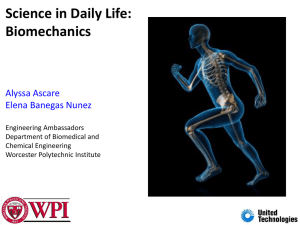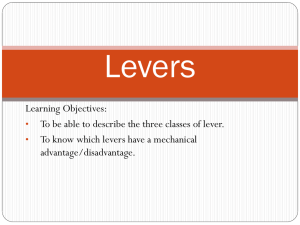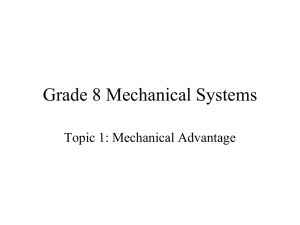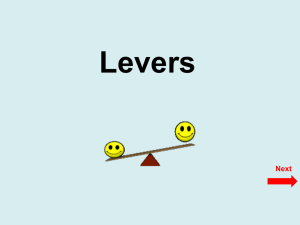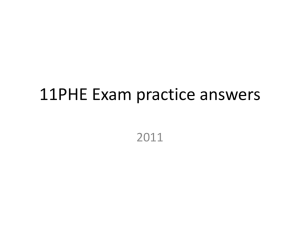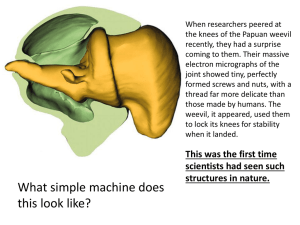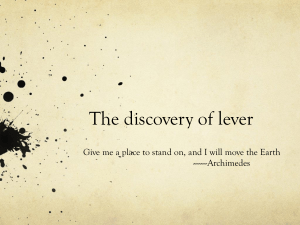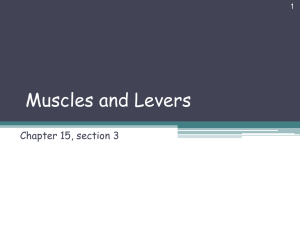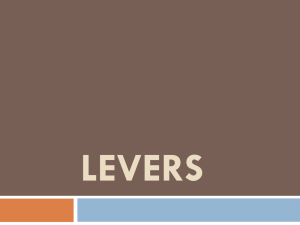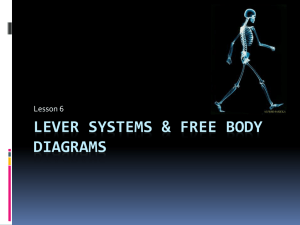Chapter 10: Movement and Forces - Westerly School Middle School
advertisement
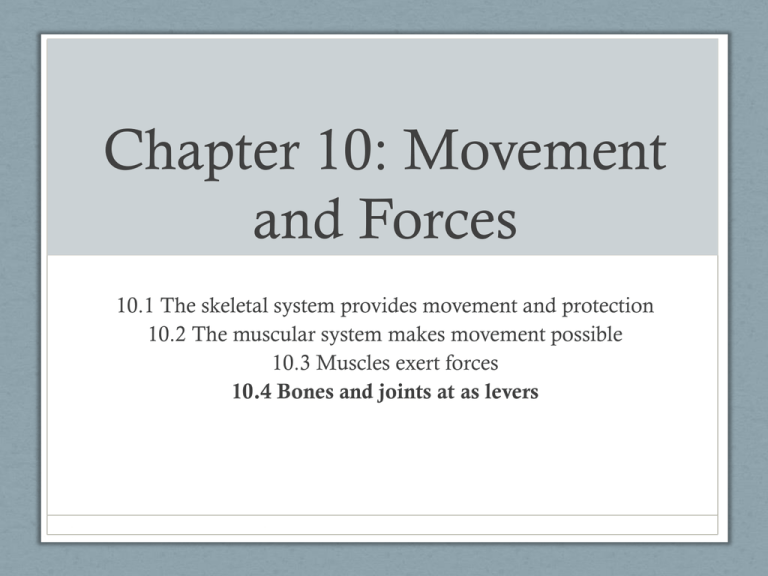
Chapter 10: Movement and Forces 10.1 The skeletal system provides movement and protection 10.2 The muscular system makes movement possible 10.3 Muscles exert forces 10.4 Bones and joints at as levers Warm-up True or False • The biceps exercise a pulling force on your arm. • True • More force is required to push objects up ramps. • Ramps reduce the amount of force needed to move objects. • A lever is made up of a rod and an inclined plane. • A lever is made up of a rod and a pivot point. The body uses levers • Examples: • Lift something close to your body: • shoulder muscles apply less force than when you lift something with your arm stretched out • A small movement from your muscles moves the end of your arm a large distance What does your arm act like when you lift something with it? A lever! Levers can change the effects of a force • Recall: A lever is a solid bar, or rod, that moves around a fixed point, a fulcrum • a bone as a rod • a joint as the pivot point • bend your arm at the elbow - you are pivoting your forearm around the joint in your elbow Levers - fulcrum • Fulcrum – a fixed point around which the rod of a lever turns • The lever’s “pivot point” • Can be located anywhere along the rod • If in middle – both ends of rod may move • If at end – just one end may move • Ex: stapler • Use less force when pressing… • When a force is farther from the fulcrum, it can turn the lever more effectively Levers - fulcrum • Elbow • Weight location relative to fulcrum: • When a weight is at your wrist–– farther from the fulcrum––it is harder to lift • Stapler and hand weight: the force is more effective when it is farther from the fulcrum Input Force and Output Force • Input force: the force exerted on a machine • Often called the “effort force” • The effort you apply to use the machine produces the input force • Output force: the force the machine exerts on the object • The weight is called the “load” • Generally: output force = load (weight) • Also called: the “resistance force” (because it resists, or acts against, the load) • The load causes the lever to pivot in one direction • The output force acts to balance the load Input Force and Output Force • The input force on a body limb comes from muscles pulling on bone • Contraction of the biceps exerts an input force on the lever of the forearm • The distance from a fulcrum to a force is called the lever arm • In the case of your forearm, the lever arm is very short, just a few centimeters from the elbow • Each lever has a lever arm defined for the input force and another defined for the output force Changing Force Size and Movement Distance • A lever can change • a small input force into a large output force • can also change the direction of a force • The farther the input force is from the fulcrum, the greater the output force will be • Trade off between distance and force • Apply less force to lift the rock, but must move the lever over a greater distance than the rock actually moves Changing Force Size and Movement Distance • Some levers, including many in the body, change a large input force into a small output force • Trade off is between having a larger force and having a larger range of motion • Like a rake! And your bicep! Classes of Levers I-F-O • Depend on placement of input force, output force, and fulcrum • First-class levers: the fulcrum is between the input and output forces • Second-class levers: the output force is between the fulcrum and the input force F-I-O • Third-class levers: the input force is between the fulcrum and the output force • Third-class levers always decrease the output force in favor of speed or distance F-O-I Classes of Levers 1st I-F-O 2nd F-O-I 3rd F-I-O Examples of class 1 levers include: Examples of class 2 levers include: * Teeter-totter * Oars on a boat * Catapult * Shoehorn * Scissors * Pair of pliers * Wheelbarrow * Crowbar * Nut cracker Examples of class 3 levers include: * Tweezers * Stapler * Mousetrap * Broom * Hockey stick 1st I-F-O 2nd F-O-I 3rd F-I-O The body’s levers can be used effectively • Using a lever puts stress on both the lever and the fulcrum––the bone and the joint • Lifting can strain your muscles • Take care of yourself! • Bending over causes your back to become a lever, and puts stress on your spine • Lifting with your legs uses the leg bones as levers • strong muscles in your thighs and calves provide the input force The body’s levers can be used effectively • Your hand is a lever with the fulcrum at the wrist • Your forearm is a lever with a fulcrum at the elbow. • Your upper arm is a lever with a fulcrum at the shoulder • http://www.edheads.org/activities/simplemachines/frame_loader.htm • http://www.msichicago.org/fileadmin/Activities/G ames/simple_machines/
